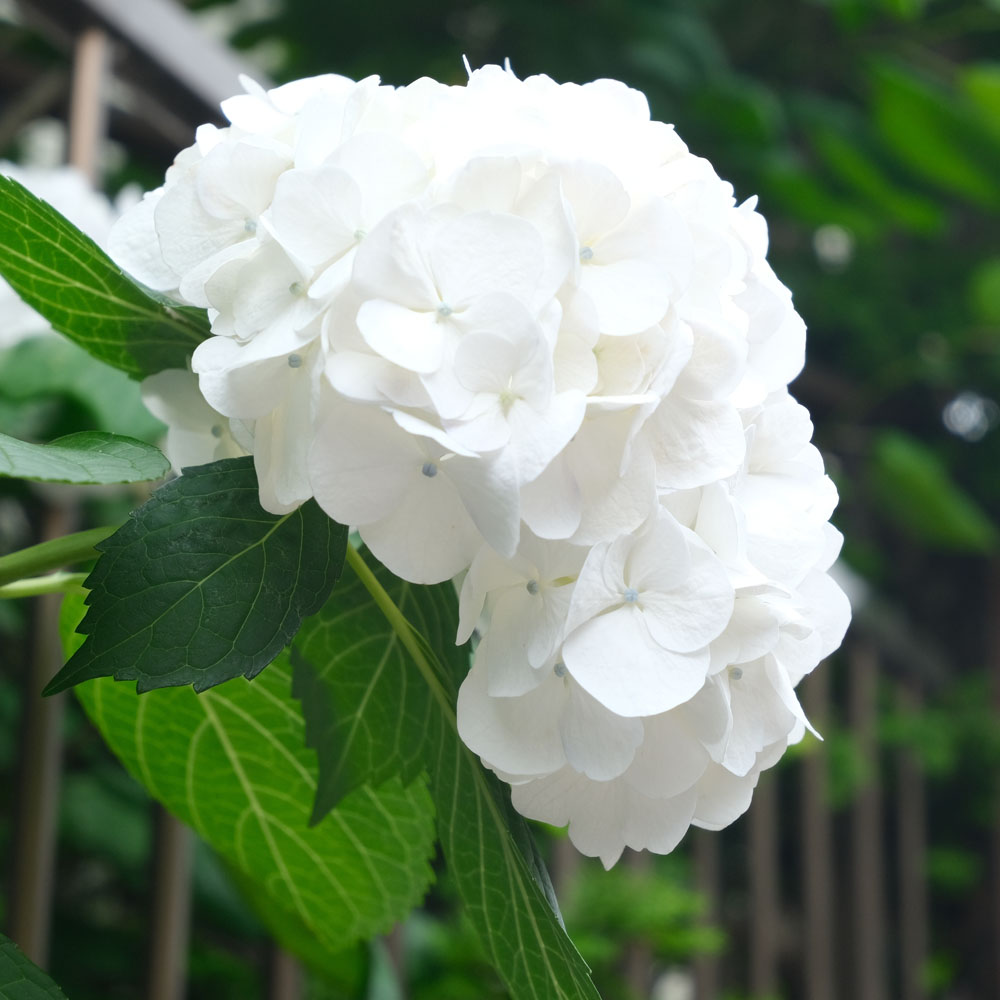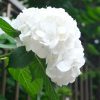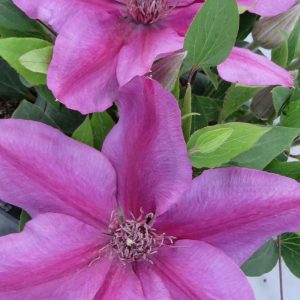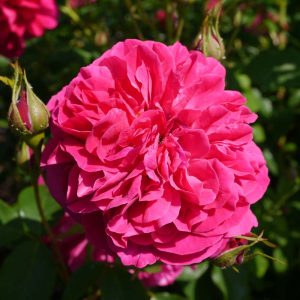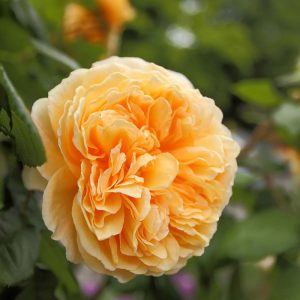Description
Hydrangea macrophylla ‘Snowball’ is a deciduous shrub that can reach up to 1.5m in height. Its large, oval-shaped leaves are a vibrant green and provide an attractive backdrop for the showy blooms. In the summer, this plant produces stunning clusters of large, spherical flowers that are reminiscent of snowballs. The blooms start off as pale green buds and gradually mature into creamy-white flowers that can reach up to 15cm in diameter. The flowers can also have a slight pink tint, especially if grown in acidic soil. Hydrangea macrophylla ‘Snowball’ prefers partial shade and well-draining soil that is kept consistently moist. It is a low-maintenance plant that is suitable for gardeners of all skill levels. To complement the beauty of this plant, consider pairing it with other shrubs such as Camellias or Azaleas. You can also mix it with other flowering perennials, such as Astilbes, Hostas, or Brunneras, to create a stunning border display. In summary, Hydrangea macrophylla ‘Snowball’ is a magnificent plant that will bring a touch of elegance and sophistication to your garden with its spectacular, snowball-like blooms.
Key Facts
- Common Name(s):Hydrangea ‘Snowball’
- Hardiness:Fully hardy
- How big will I get? Hydrangea macrophylla ‘Snowball’ can grow to a height of 1.2m and a spread of 1.2m.
- Did You Know That:Hydrangeas contain low levels of cyanide?
Plant Calendar
A rough guide to how this plant will change through the year.
| Jan | Feb | Mar | Apr | May | June | July | Aug | Sept | Oct | Nov | Dec | |
| Flowering Time | 
| 
| 
| |||||||||
| Foliage Colour |  |
 |
 |
 |
 |
 |
 |
 |
 |
| J | F | M | A | M | J | J | A | S | O | N | D |

| 
| 
| |||||||||
 |
 |
 |
 |
 |
 |
 |
 |
 |
Care Guide

Soil Requirements
Hydrangea macrophylla ‘Snowball’ prefers moist but well-draining soil. This plant can grow in soil with a wide range of pH levels, it is not picky about the pH level of the soil.

Best Position
Hydrangea macrophylla ‘Snowball’ prefers a sheltered position and likes the sun but not too much of it, so an area that is partially shaded is perfect.

Maintenance
Hydrangea macrophylla ‘Snowball’ flower on the previous years growth, therefore each year in late Winter or early Spring cut out a small number of the old stems at the base and remove old flower heads back to the nearest sideshoots. This will encourage some new growth which will in the future produce more flowers, but it won’t affect thats season’s flowers. Although most shrubs that flower on old wood should be pruned immediately after flowering, Hydrangea macrophylla are an exception to this rule. This is because the cut stems are vulnerable to frosts, whereas the old flowers protect them from the frost, therefore they should be trimmed back later.

Pest, Diseases and Wildlife
Hydrangea macrophylla ‘Snowball’ can have problems with aphids and scale insects, it can be vulnerable to certain diseases such as powdery mildews, leaf spot, grey moulds and honey fungus. It is toxic to cats, dogs and horses.
